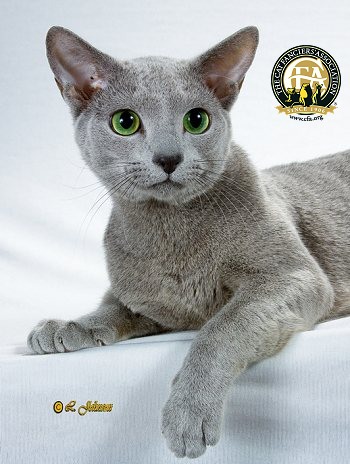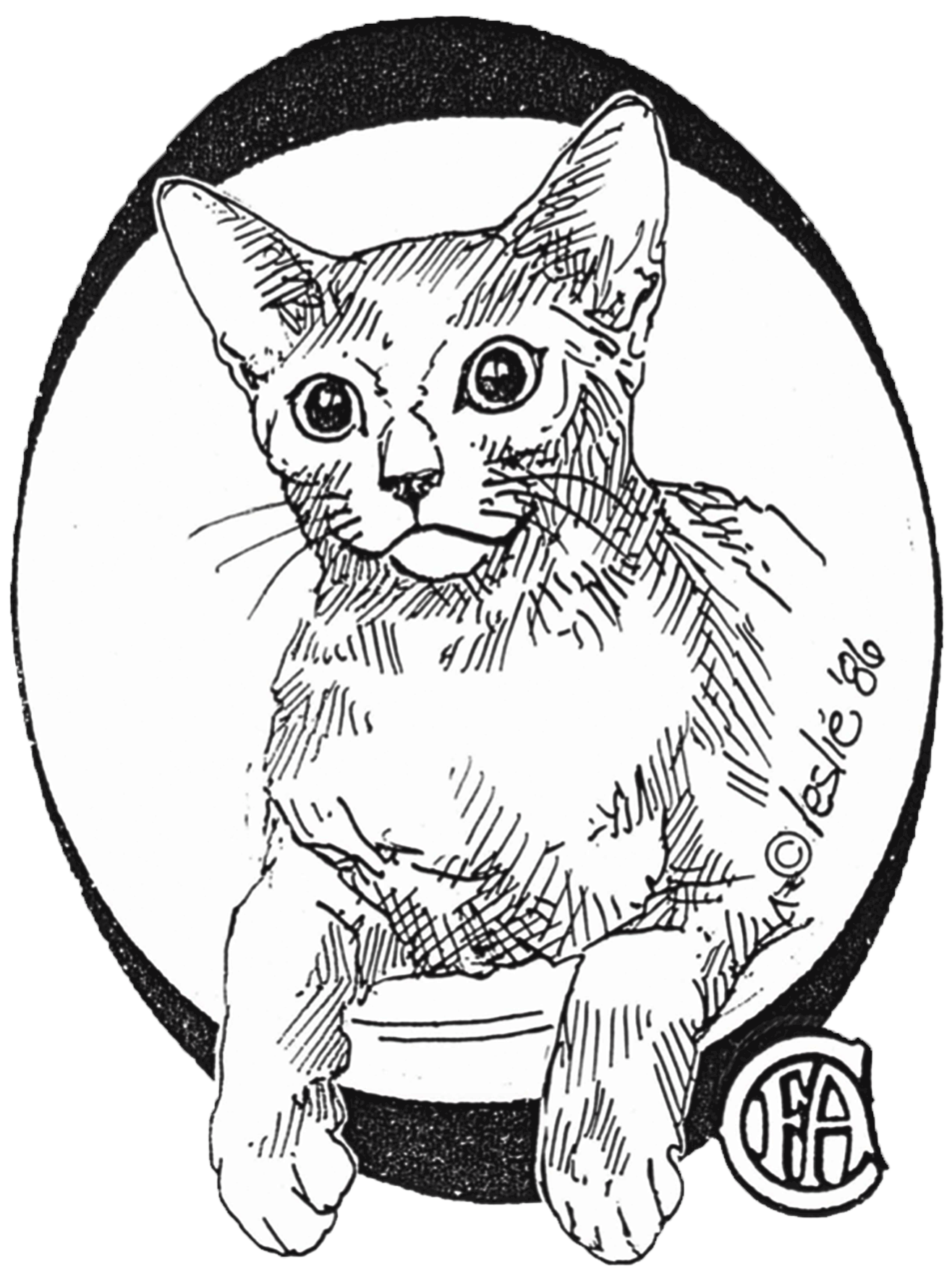Russian Blue Fanciers

The sparkling, silvery blue coat and brilliant green eyes of the Russian Blue draw immediate attention to this shorthaired breed. But it’s the intelligent and playful disposition that makes the Russian Blue a perfect pet for most households.
The Russian Blue is a gentle cat with a somewhat shy nature around strangers. They are devoted to and affectionate with their loved ones. Sensitive to their owner’s moods, the Russian Blue will greet you at the door, find a quiet seat next to you, or fetch a toy at playtime. In fact, “fetching” is a favorite pastime for Russians and their owners! Pull out the vacuum cleaner, and the Russian will find a safer and quieter location. Relatively quiet-voiced (except perhaps at mealtime), the Russian Blue appreciates a pat on the head, a window from which to watch the birds, and, of course, the comforts of home. Minimal grooming is required; regular nail clipping, good nutrition, an occasional combing, and lots of petting keep your Russian Blue pet looking spectacular.
Little is known about the origin of the Russian Blue breed, though stories are legendary. Many believe the Russian Blue is a natural breed originating from the Archangel Isles in northern Russia, where the long winters developed a cat with a dense, plush coat. Rumors also abound that the Russian Blue breed descended from the cats kept by the Russian Czars. Assuming the Russian Blue did migrate from northern Russia, it was likely via ship to England and northern Europe in the mid 1860s.
First exhibited at London’s Crystal Palace in 1875 as the “Archangel Cat,” the original Russian Blue competed with all other blue cats. In 1912, the Russian Blue was given a separate class for competition as breeders in England and Scandinavia worked to develop the foundation bloodlines for the contemporary Russian Blue. Although Russian Blues were imported to the United States in the early 1900s, it wasn’t until after World War II that North American breeders began combining the European bloodlines to produce cats with plush, silvery coats, emerald eyes, and the distinctive profile. From the 1960s, the Russian Blue began gaining popularity and has become a favorite at cat shows and at home.
One of the features of the short, silky, dense coat is the plush feel and the lack of constant shedding. The coat color is an even, bright blue, and each guard hair appears as if dipped in silver – giving the Russian a silvery sheen and lustrous appearance. Russian Blues are registered in only one color – blue – and one coat length – short. In contrast to the blue coat, the Russian Blue has large, rounded, wide-set eyes that are vivid green. The head shape is a broad, medium wedge with a flat top and straight nose in profile. Large ears are wide at the base and set rakishly toward the side of the head. The Russian Blue is a medium-sized cat, fine-boned, long, and firmly muscled.
What makes the Russian Blue more than “any other grey cat?” The many years of selective breeding and careful registration of ancestry via pedigrees allowing only blue shorthaired cats has resulted in a breed with a distinctive appearance and a unique personality that sets it apart from other cats…making the Russian Blue an entertaining and affectionate companion to its family and friends.
When choosing your Russian Blue you should look for a reputable breeder, who will undoubtedly have a series of questions for you designed to make sure that you and the Russian Blue are compatible. Do not be surprised if there is a wait of some sort. These wonderful family members are worth it. Usually breeders make kittens available between twelve and sixteen weeks of age when they have had sufficient time with their mother and littermates to be well socialized and old enough to have been fully vaccinated. Keeping your Russian Blue indoors, neutering or spaying, and providing acceptable surfaces (scratching posts) for the natural behavior of scratching are essential elements for maintaining a healthy, long, and joyful life. For more information, please contact the Breed Council Secretary for this breed.
Resource: CFA.org
OUR POSITION ON RUSSIAN BLUE “VARIANTS”
